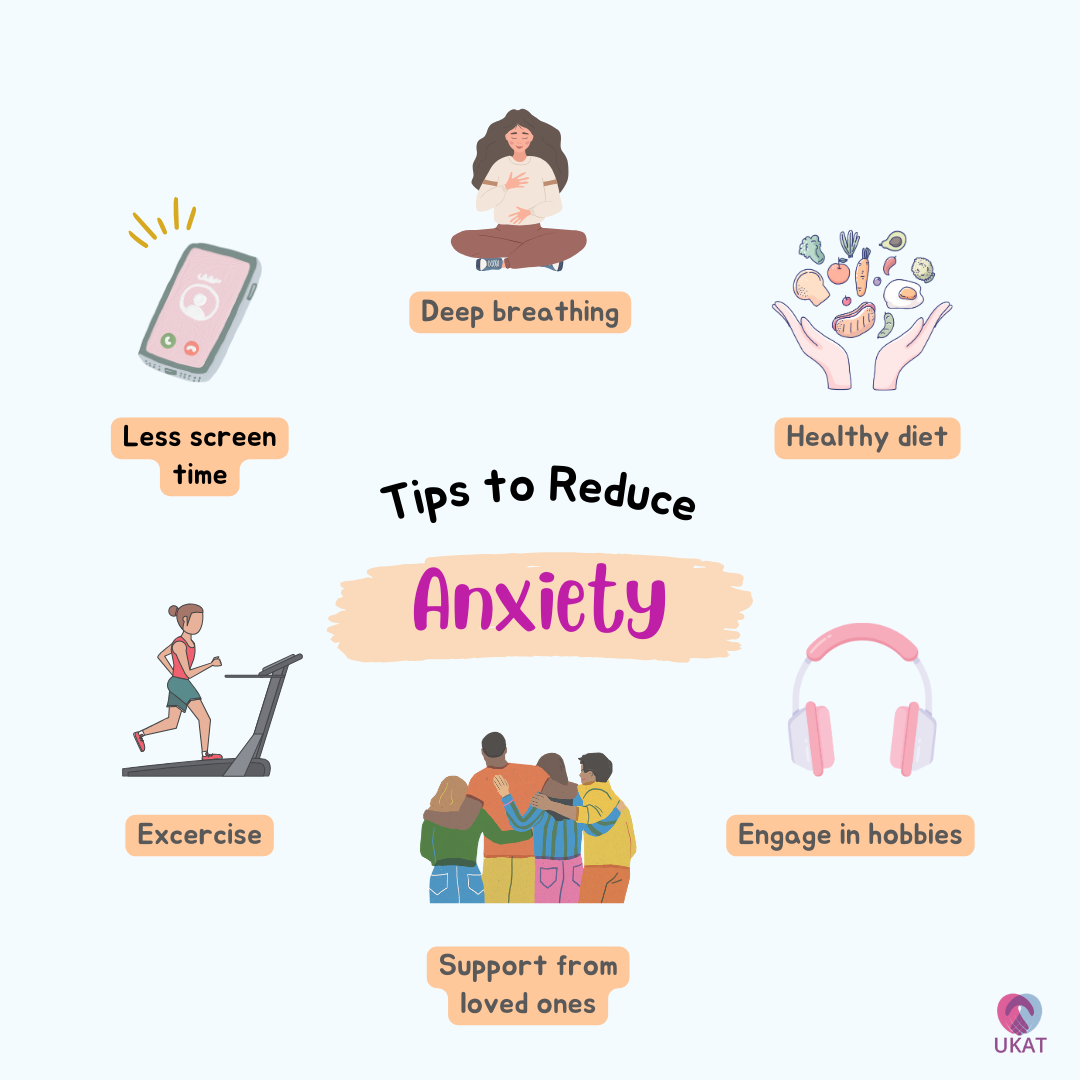Anxiety
Anxiety is a term often tossed around in everyday conversations, yet it carries profound significance within the realm of mental health. It encompasses a spectrum of disorders characterised by persistent worry, fear, and apprehension, significantly disrupting a person’s ability to navigate their daily life easily. While anxiety is a universal emotional experience at some point in every individual’s life, it transforms into a pervasive disorder when it intensifies to uncontrollable levels. Anxiety disorders are the most prevalent mental health concerns worldwide, impacting millions who grapple with various manifestations of this condition. Understanding anxiety in its full spectrum – its signs, the underlying neurobiology and effective treatment options – is pivotal in providing effective support to everyone who needs it.
What is anxiety?
We all experience anxiety at some point, whether that’s nervousness about a job interview, a hospital check-up or financial worries. While anxiety, to a certain extent, is a natural and even healthy response to stress, it becomes a disorder when it frequently occurs, lasts for an extended period (usually six months or more) and interferes with daily activities. It can manifest through various psychological disorders characterised by chronic worry, fear and nervousness.
Anxiety disorders can derail an individual’s life, causing them to avoid situations due to an unyielding fear of what might happen. This constant state of worry and panic can lead to physical symptoms, making the individual feel ill and in some cases, can lead to other mental health issues such as depression.
Types of anxiety disorders
Anxiety disorders encompass a range of conditions, each with its distinct features but all centred around excessive fear and apprehension. These disorders have different mental and physical symptoms of anxiety, and understanding how they affect individuals’ lives is crucial in seeking the right anxiety treatment.
Generalised anxiety disorder (GAD)
People with generalised anxiety disorder constantly fret about daily life, experiencing excessive and pervasive anxiety irrelevant to reality. This can seriously impact their well-being and functioning, often accompanied by physical symptoms like muscle tension, insomnia, and chronic indigestion.
Social anxiety disorder
Individuals with social anxiety disorder fear embarrassment, rejection, humiliation, or negative judgement in social situations. This condition extends beyond shyness, significantly affecting career, academics, and relationships. They often avoid social events, have a small social circle, and struggle to assert themselves in groups.
Panic disorder
Panic disorder entails recurrent, unexpected panic attacks with intense symptoms like palpitations, rapid heart rate, trembling, and breathlessness. Fear of future attacks can lead to avoidance behaviours, even staying home.
Obsessive-Compulsive Disorder (OCD)
OCD is marked by persistent, distressing thoughts (obsessions) that trigger repetitive behaviours or mental rituals (compulsions) aimed at anxiety reduction. This chronic disorder can greatly disrupt daily life.
Specific phobias
Specific phobias involve intense, irrational fears of particular things or situations, like flying or spiders. These fears lead to extreme avoidance behaviours, greatly impacting one’s quality of life.
Agoraphobia
Agoraphobia is marked by a fear of places where escape is difficult, potentially leading to panic. This can confine individuals to their homes, with everyday activities like going outside or using public transport triggering disproportionate fear.
Separation anxiety disorder
Separation anxiety disorder, often seen as a childhood condition, can impact adults too. It involves excessive separation-related anxiety that impairs social and occupational functioning, often leading to avoidance of leaving home, work, or school due to fears about loved ones.
Selective mutism
This is a rare but severe anxiety disorder, usually identified in children. Selective mutism means that the individual cannot speak in certain situations, like at school or in public, but can speak freely in more familiar settings, such as at home. It is notably more than shyness and can significantly affect performance at school, work or unfamiliar social situations.
The neurobiology of anxiety
The neurobiology of anxiety is complex and involves various mechanisms influenced by genetic and environmental factors. However, understanding the neurobiological basis of anxiety is fundamental in treating and managing anxiety disorders.
Brain chemistry
Studies have indicated that neurotransmitter imbalances can significantly affect mood and anxiety levels. Neurotransmitters such as serotonin, dopamine and norepinephrine play crucial roles in regulating emotions and imbalances in these chemicals can lead to the mental, emotional and physical symptoms of anxiety.
Amygdala
The amygdala, a brain region primarily involved in emotion processing, especially fear and threat perception, is overactive in individuals with anxiety disorders. This heightened activity can increase anxiety responses to situations or things that may not pose a threat.
Hormonal factors
Research has demonstrated that hormonal fluctuations can also influence anxiety levels. Elevated levels of cortisol, known as the “stress hormone,” have been associated with heightened anxiety, while changes in hormone levels during menstrual cycles, pregnancy or menopause can also exacerbate anxiety symptoms.
Genetic factors
Genetics also play a crucial role in developing anxiety disorders, with substantial evidence supporting that individuals with a family history of these disorders are at a higher risk of developing an anxiety disorder.
Brain structures and functioning
Besides the amygdala, other structures like the prefrontal cortex and hippocampus are essential in anxiety regulation, so irregularities in these areas can potentially lead to anxiety disorders. Functional MRI studies have offered insights into the altered brain functioning of individuals with anxiety disorders, which can help with diagnosis and treatment.
Symptoms of anxiety
Anxiety can manifest through various symptoms that affect individuals physically, emotionally and cognitively. Recognising these signs of anxiety and understanding their manifestations can be crucial in seeking timely intervention and support.
Physical symptoms of anxiety
- Palpitations and increased heart rate: Individuals experiencing anxiety report a noticeable increase in their heart rate. This can be accompanied by palpitations where the heart seems to “pound” in the chest.
- Shortness of breath: Anxiety can lead to hyperventilation, which can cause the person to feel short of breath. This symptom can sometimes be confused with respiratory issues but is a common manifestation of anxiety.
- Muscle tension: Constant muscle tension or unexplained body aches can indicate an underlying anxiety disorder.
- Digestive problems: Individuals with anxiety disorders frequently report experiencing gastrointestinal issues, including stomach aches, nausea and diarrhoea.
Emotional symptoms
- Restlessness: People with anxiety often find themselves unable to relax and constantly feel on edge.
- Irritability: Increased irritability can indicate anxiety, affecting interpersonal relationships and daily functioning.
- Fear and apprehension: Persistent and excessive worry about various aspects of life, often disproportionate to the actual situation, is a key hallmark of anxiety disorders.
Cognitive symptoms
- Difficulty concentrating: Individuals with anxiety may find it challenging to focus on tasks, often reporting a feeling of their mind going blank.
- Obsessive thoughts: Obsessive thoughts that are persistent and unwanted can be a symptom of certain anxiety disorders.
What is high-functioning anxiety?
High-functioning anxiety is not a diagnostic term used in psychiatry but is often used colloquially to describe individuals who can maintain high levels of function despite internal symptoms of anxiety. Characteristics and symptoms of high-functioning anxiety include:
- Perfectionism: Individuals with high-functioning anxiety often impose extremely high standards on themselves, driven by a deep fear of failure.
- Overthinking: This is a tendency to over analyse situations and potential outcomes which can sometimes lead to a cycle of constant worry and stress.
- Avoidant behaviours: Even though they can maintain a façade of normality, individuals might avoid situations that provoke anxiety and restrict themselves from potentially stressful experiences.
Compulsive behaviours: Individuals may engage in compulsive behaviours to mitigate anxiety, such as excessive list-making or meticulous organisation.
Diagnosis and assessment of anxiety
The diagnosis and assessment process for anxiety disorders involves a comprehensive approach, often bringing together insights from various healthcare professionals such as psychologists, psychiatrists and primary care providers. It may include:
Clinical interviews
These interviews include a series of questions concerning the individual’s medical history, the symptoms they are experiencing and their severity and duration. This is to get a clear picture of the person’s experiences and how they impact their daily life.
Psychological testing
Following the interviews, psychological tests can assess an individual’s symptoms and cognitive function, which can help in forming a precise diagnosis.
Physical examinations
Physical examinations can sometimes be a part of the diagnostic process to rule out any physical health conditions that might be causing or exacerbating the anxiety symptoms. This might include blood tests to check for issues such as hormone imbalances or thyroid problems, which can sometimes present with symptoms similar to anxiety disorders.
Differential diagnosis
A differential diagnosis may be carried out to delineate anxiety disorders from other psychiatric disorders with overlapping symptoms, such as depressive disorders or bipolar disorders. This is a careful elimination process to pinpoint the primary cause of the symptoms.
Anxiety treatment
Calm
In the first phase, the fundamental objective is to teach the individual how to calm their nervous system to diminish anxiety symptoms effectively. UKAT London Clinic’s anxiety treatment encompasses a range of relaxation techniques such as deep breathing, mindfulness meditation and yoga. Therapy sessions focusing on Cognitive Behavioural Therapy (CBT) and Dialectical Behaviour Therapy (DBT) are also instrumental at this stage, aiding individuals in identifying and challenging anxious thoughts.
Connect
Connecting represents the phase where individuals learn to connect with their inner selves and understand the underlying causes of their anxiety. This stage often involves deeply exploring feelings and emotions, bringing awareness to the triggers that cause anxiety. This stage promotes self-compassion and understanding, fostering a deeper connection with oneself and others.
Cultivate
The final stage, cultivate, is about fostering positive habits and cultivating a lifestyle that supports long-term recovery. This involves building resilience by nurturing positive traits and skills rather than weaknesses. This stage also encourages cultivating a balanced lifestyle incorporating healthy eating, regular physical activity and adequate sleep.

UKAT London Clinic’s anxiety treatment programmes provide a solid foundation for recovery and ongoing, personalised support. This comprehensive approach, grounded in self-compassion and resilience, empowers individuals to navigate the complexities of anxiety. Call us today to start on a pathway towards healing, offering renewed hope and a brighter future.





